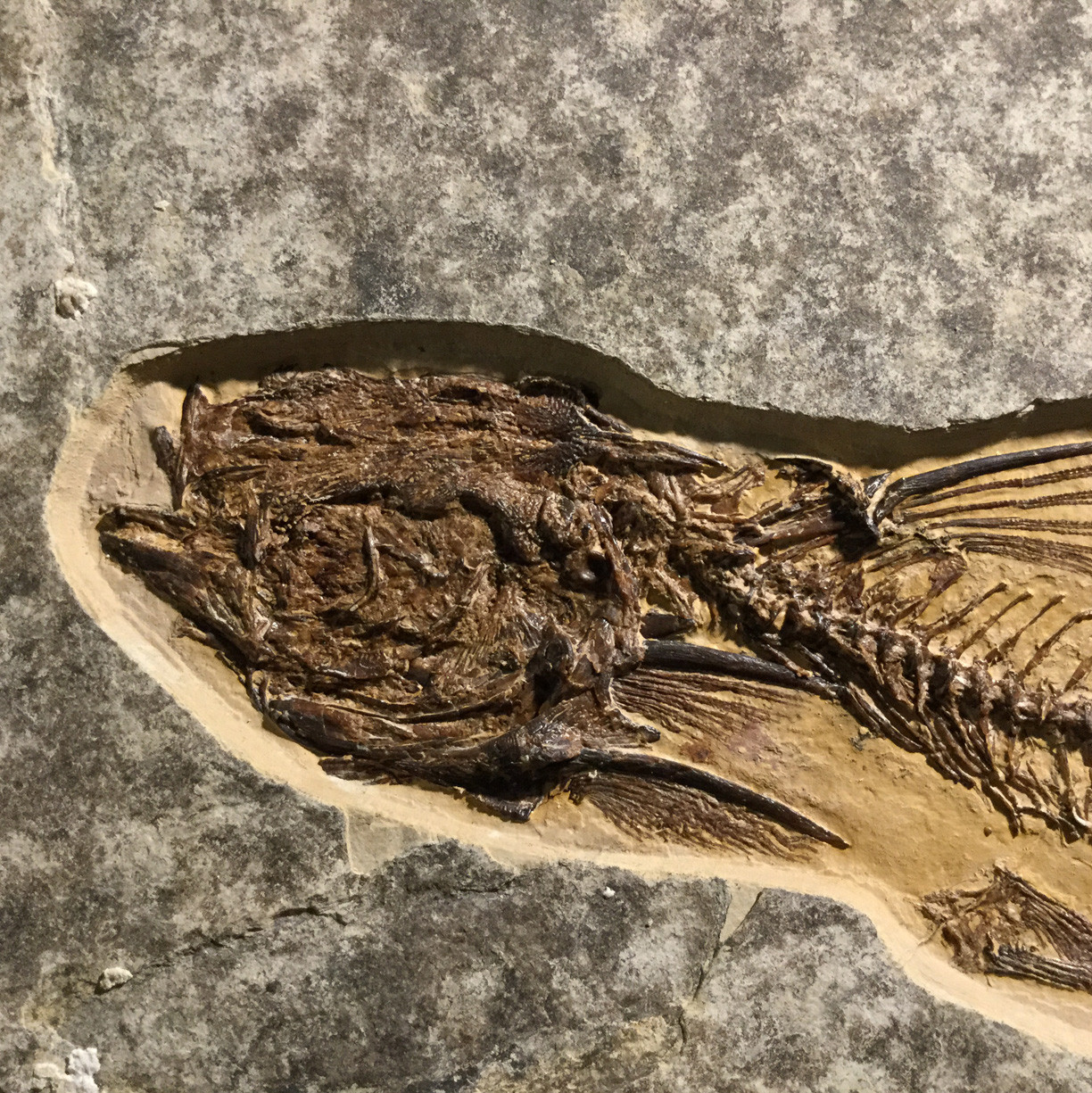
Eocene Green River Catfish
Sorry, this item is no longer for sale
Astephus antiquus
Green River Formation
Middle Eocene
Sweetwater County, Wyoming
Green River Formation
Middle Eocene
Sweetwater County, Wyoming
Here is shown a splendid specimen of this fossil catfish. The preservation is exceptional and all of the bones exhibit wonderful detail. The pectoral spines are clearly visible. This specimen is 21.5 cm in length. There is no repair or restoration.
Astephus and Hypsidoris are both members of the Family Ictaluridae, native to North America. Green River catfish are easily recognized by their stout dorsal and pectoral spines, scale less bodies and broad skull. Ictalurid species have four pairs of barbels (or whiskers). Like modern catfish, they possessed a vibration sensitive organ called the Weberian apparatus. The Weberian apparatus consists out of specialized vertebrae at the front of the spinal column which passed vibrations to the inner ear using the swim bladder as a resonance chamber. The structure essentially acts as an amplifier of sound waves that would otherwise be only slightly perceivable by the inner ear structure alone.
Normal size of Astephus is around 15cm and rarely exceeds 18cm, maximum total length is about 30cm. Hypsidoris seems to be in the same size range.
The diet of Green River catfish was probably similar to existing ictalurids consisting of plants, small fish, crayfish and mollusks. Astephus and Hypsidoris were probably bottom feeders.
Astephus antiquus is unknown as a body fossil in the middle unit of Fossil Butte Member, and only one specimen has been found in all of Fossil Lake, although it is abundant in Lake Gosiute strata.
Hypsidoris farsonensis has only been found in Lake Gosiute deposits of the Green River Formation, east of Fossil Lake.
The discovery of numerous and widespread fossil catfish in oil shale units of the Laney Member of the Eocene Green River Formation is evidence of aerobic conditions in the hypolimnic waters of ancient Lake Gosiute.
Astephus and Hypsidoris are both members of the Family Ictaluridae, native to North America. Green River catfish are easily recognized by their stout dorsal and pectoral spines, scale less bodies and broad skull. Ictalurid species have four pairs of barbels (or whiskers). Like modern catfish, they possessed a vibration sensitive organ called the Weberian apparatus. The Weberian apparatus consists out of specialized vertebrae at the front of the spinal column which passed vibrations to the inner ear using the swim bladder as a resonance chamber. The structure essentially acts as an amplifier of sound waves that would otherwise be only slightly perceivable by the inner ear structure alone.
Normal size of Astephus is around 15cm and rarely exceeds 18cm, maximum total length is about 30cm. Hypsidoris seems to be in the same size range.
The diet of Green River catfish was probably similar to existing ictalurids consisting of plants, small fish, crayfish and mollusks. Astephus and Hypsidoris were probably bottom feeders.
Astephus antiquus is unknown as a body fossil in the middle unit of Fossil Butte Member, and only one specimen has been found in all of Fossil Lake, although it is abundant in Lake Gosiute strata.
Hypsidoris farsonensis has only been found in Lake Gosiute deposits of the Green River Formation, east of Fossil Lake.
The discovery of numerous and widespread fossil catfish in oil shale units of the Laney Member of the Eocene Green River Formation is evidence of aerobic conditions in the hypolimnic waters of ancient Lake Gosiute.





